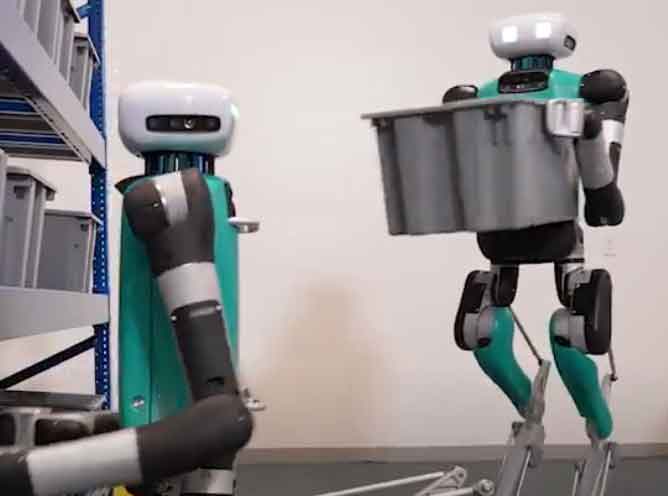Gilmore Says.... |
 |
This machine learning is powerful. “The real world throws problems at the robots that couldn’t be cooked up in a lab,” the article notes.
|
 |
What do you say? |
|
| Click here to send us your comments |
| |
|
|
|
The stakes are high in the technology race, across consumers, business and military domains.
A little more than a week ago, a robotics trade group called the Association for Advancing Automation - better known as A3 - sent to Congress six policy recommendations relative to the US maintaining a global lead in robot technology.
Number 1: Establish a Central Government Robotics Office and a Robotics Commission. Others are focused on tax policy, standards and more. “The United States is at a critical moment in shaping the future of automation,” said Jeff Burnstein, president of A3. “While AI is a major focus, we cannot afford to fall behind in robotics.”
The full list can be found here: Can the US Lead in Industrial Robots?
Around the same time came this headline from an excellent article in the Wall Street Journal: Humanoid Robots Are Lousy Co-Workers. China Wants to Be First to Change That.
That sounds rather ominous, doesn’t it.
Early on, the piece by Raffaele Huang and Josh Chin tells this anecdote:
“For the past few weeks, Chinese engineers have gathered in the factory of a luxury electric-vehicle brand to test a new technology the country’s leadership considers vital to its rivalry with the US
“The engineers at a startup called UBTech are training humanlike robots to sort auto parts and move containers. The task looks mundane, but the technology behind it isn’t.
‘Powered by artificial intelligence, these humanoids work with other robots and figure out on their own how to get the job done, according to the company - and, in the process, learn how to do it better.
“The US and China are the only two countries at the cutting edge of intelligent humanoid robots, according to specialists. Whoever can make a truly useful humanoid will come to dominate an untold number of labor-intensive industries.”
So the stakes are high indeed.
Until recently, progress has been slow in humanoid bots. But soon, the WSJ article says, they will revolutionize everything from manufacturing to mining, caring for the elderly and fighting wars. With functioning eyes, ears, hands and legs, they will blend seamlessly into environments designed for people, whether in the home or a distribution center.
 For now, overall has the robotics lead over China, the WSJ says. And some lawmakers and other have urged the White House to ban Chinese humanoids from the US and further restrict Chinese robot makers’ access to American technology, citing national-security concerns. For now, overall has the robotics lead over China, the WSJ says. And some lawmakers and other have urged the White House to ban Chinese humanoids from the US and further restrict Chinese robot makers’ access to American technology, citing national-security concerns.
But China may have the lead in robots for logistics and manufacturing, with a focus on what is called “physical AI,” which involves the need to rapidly three-dimensional data to understand physics.
“That is where China has a distinct edge: The country is home to an immense number of factories where humanoid robots can absorb data about the world while performing tasks,” the Journal reports.
“The reason why China is making rapid progress today is because we are combining it with actual applications and iterating and improving rapidly in real scenarios,” Cheng Yuhang, a sales director with Deep Robotics, one of China’s robot startups, told the Journal. “This is something the US can’t match.”
This machine learning is powerful. “The real world throws problems at the robots that couldn’t be cooked up in a lab,” the article notes.
The Journal currently takes two robots around 12 seconds to load a container onto a truck together, compared with three seconds for human workers, representative from UBTech. The robots are expected to get faster—and of course they can work around the clock, don’t get sick, etc.
Amazing.
My view: let’s quickly consider the A3 policy recommendations and others, as the consequences of how this plays out are huge.
What is your reaction to the robotics article? Let us know your thoughts at the Feedback section below.
Your Comments/Feedback
|